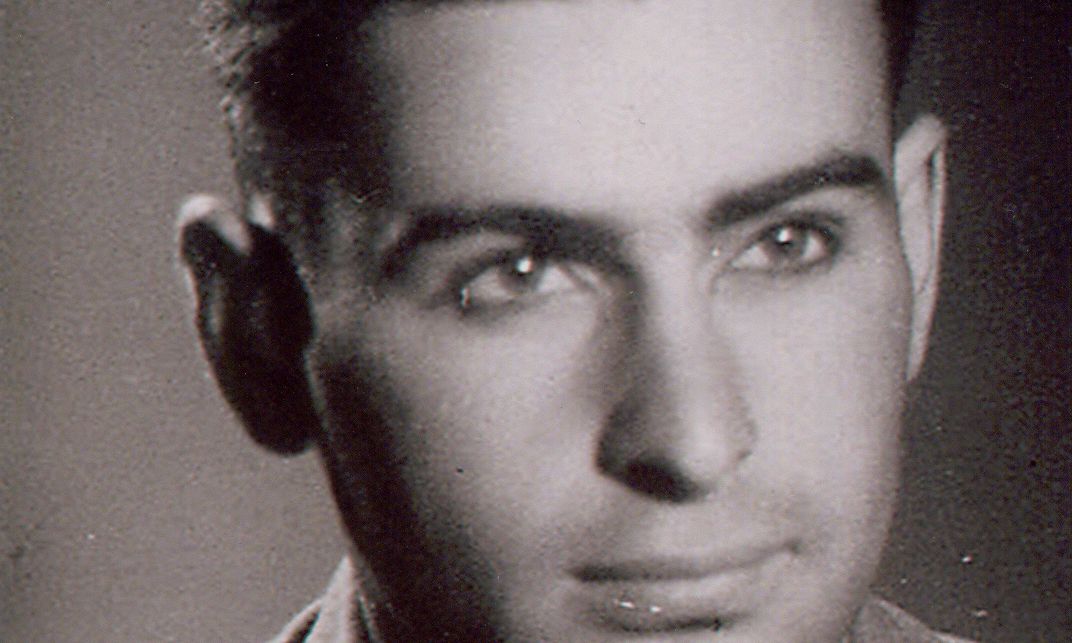Pfc Richard Barancik during his military service in the Second World War Photo: Monuments Men and Women Foundation Collection, courtesy of the Barancik family
Richard M. Barancik, the last living member of the Monuments Men and Women of the Second World War—an international group of roughly 350 people who worked together during and after the war to protect and recover European artworks and artefacts that were looted by Nazi soldiers or otherwise in danger of destruction—has died. Barancik died in hospital in Chicago on 14 July, and his death has been confirmed by his daughter Jill. He was 98 years old.
Barancik was born in Chicago on 19 October 1924. He enlisted in the military at 17, and began studying engineering at the University of Nebraska for a brief period before relocating to Europe to join in the war effort. “I must confess I was a terrible student in high school. But I spent my time reading and I was always interested in art and drawing,” he recalled in an interview published just last year. “In contrast, my time studying engineering was well-spent because I found something I truly liked and had a natural ability at it. And that’s when I got serious about my studies. Sadly, my time at the University of Nebraska was cut short when we were called to active duty before graduation because, at that time, Hitler was making his final push and the US Army was short of infantry replacements.”
An army private first class, Barancik was stationed in England in 1944. On Christmas Eve of that year, he was aboard a ship crossing the English Channel into France and toward the Battle of the Bulge when an accompanying ship, the SS Léopoldville, was sunk by German torpedoes, killing at least 800 US troops, and Barancik’s ship was diverted as a result. After Germany’s surrender, Barancik was sent to Austria, where he first learned of the Allied armies’ Monuments, Fine Arts and Archives programme, also called the Monuments Men and Women. “When I arrived in Salzburg, I was not only overwhelmed by the beauty of the town but the quality of the men in the Fine Arts Section. They were typically older and very well educated in the Fine Arts,” he said in the same interview.
Barancik promptly volunteered for the Monuments Men, working for three months as a driver and guard. He helped reallocate art and artefacts to the Wiesbaden Central Collecting Point, one of two main collection points used by the group. He also served as a guard at the Austrian salt mines, in which roughly 6,500 works of Nazi-looted art were stored.
Pfc Richard Barancik during his military service in the Second World War Photo: Monuments Men and Women Foundation Collection, courtesy of the Barancik family
Much of the work that Barancik helped transport and safeguard was held in sealed crates at the time, so he was unable to see a great deal of what he was protecting. “Someone might have said, ‘There’s a Vermeer in there,’ and he knew the art was important or valuable,” Robert M. Edsel, founder and chair of the Monuments Men and Women Foundation and author of the book The Monuments Men: Allied Heroes, Nazi Thieves, and the Greatest Treasure Hunt in History, told The New York Times. (The book was turned into a movie in 2014, directed by and starring George Clooney.)
After his time as a Monuments Man, Barancik began his studies toward what would become a lifelong career as an architect. He remained abroad at the University of Cambridge and École des Beaux-Arts in Paris before returning to the US to complete his degree at the University of Illinois Urbana-Champaign. He opened the architecture firm Barancik, Conte & Associates in 1950, and continued working in the field until his retirement in 1993.
In 2015, Barancik and three other members of the Monuments Men and Women travelled to Washington, DC to receive the Congressional Gold Medal, the highest award that can be given to a civilian. “The Americans cared about the cultural traditions of Europe,” he told the Los Angeles Times on the occasion of the medal ceremony. “We did everything we could to salvage what the Nazis had done. It’s the best we could do.”
His daughter Jill told The New York Times that Barancik “was very embarrassed at the attention” that ensued after he received the Congressional Gold Medal. “He didn’t feel like a hero,” she said. “He said, ‘I was a kid, I was there for three months. It’s wrong for me to take credit.’ But I’d tell him, ‘You were a witness, you're representing the people who aren’t with us anymore.’” She added that a positive effect of the reinvigorated attention were the innumerable correspondences Barancik would receive. “He’d get fan mail and, once a week, an autograph request,” his daughter said. “He’d get sensitive letters from people, lots of them from schoolchildren, which kept the conversation going.”

